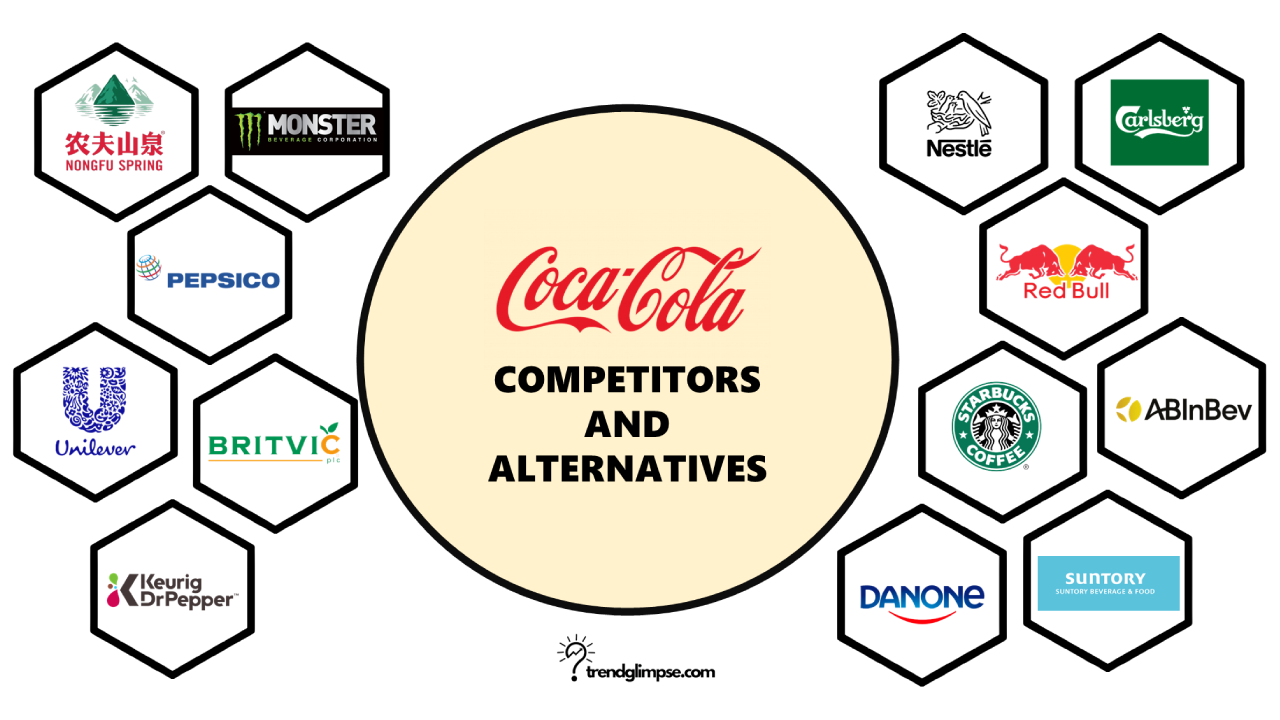An Overview of Coca-Cola
Coca-Cola – it’s a name we all know and a beverage many of us have enjoyed. As one of the most recognizable brands in the world, Coca-Cola has become much more than just a soda company. For over 130 years, Coca-Cola has been delivering tasty, refreshing drinks while evolving into a total beverage company.
Headquarters: Atlanta, Georgia, United States
Industry: Beverages
Current CEO: James Quincey
Annual Revenue [2022]: US$ 43.0 Billion
Employee Count: ~82,500
Even with all the new beverage options available today, Coca-Cola remains dominant in the industry. According to their latest earnings report, Coca-Cola holds over 40% market share in the US for non-alcoholic beverages. They achieved this by diversifying their offerings to keep up with changing consumer tastes. Beyond classic Coca-Cola, they now have over 500 sparkling and still brands like Sprite, Fanta, smartwater, Vitaminwater, Minute Maid juices, Gold Peak teas, and more.
Sparkling Soft Drinks, Water, Sports Drinks, Juice, Value-Added Dairy, Plant-Based Drinks, Tea, And Coffee
Brand Portfolio of Coca-Cola
Coca-Cola, Sprite, Fanta, Dasani, smartwater, vitaminwater, Topo Chico, BODYARMOR, Powerade, Costa, Georgia, Gold Peak, Ayataka, Minute Maid, Simply, innocent, Del Valle, fairlife, AdeS
Competitiors of Coca-Cola
Pepsico, Red Bull GmbH, Nestle, Keurig Dr. Pepper, Unilever, Monster Beverage Corporation, Danone, Starbucks Corporation, Nongfu Spring, Britvic, Carlsberg, Anheuser-Busch InBev, Kraft Heinz Company, Suntory Beverage and Food Limited
Coca-Cola’s competitors have jumped on these evolving preferences quickly. But do these products stack up to the latest innovative competitor beverages?
Let’s look closer at the biggest Coca-Cola Competitors and Alternatives next to analyze how they compare on relevant consumer needs. (Please note that in this article, we refer to Coca-Cola as the company and brand overall, not solely their original Coca-Cola soda product.)
Pepsico
We all know about the legendary rivalry between Coca-Cola and PepsiCo, known as the “Cola Wars” But it’s not just about market share; it’s all about brand loyalty, who can make the fizziest, tastiest, and most popular drinks.
PepsiCo, a global giant, caters to consumers in more than 200 countries and has its products enjoyed over a billion times daily.
In recent financial reports, PepsiCo’s performance shines. They reported total revenues of $23.45 billion, slightly exceeding the market estimate of $23.43 billion. Notably, in the third quarter of 2023, their beverage business saw impressive growth, with organic revenue jumping by 8%, while their convenient foods segment grew by 9%.
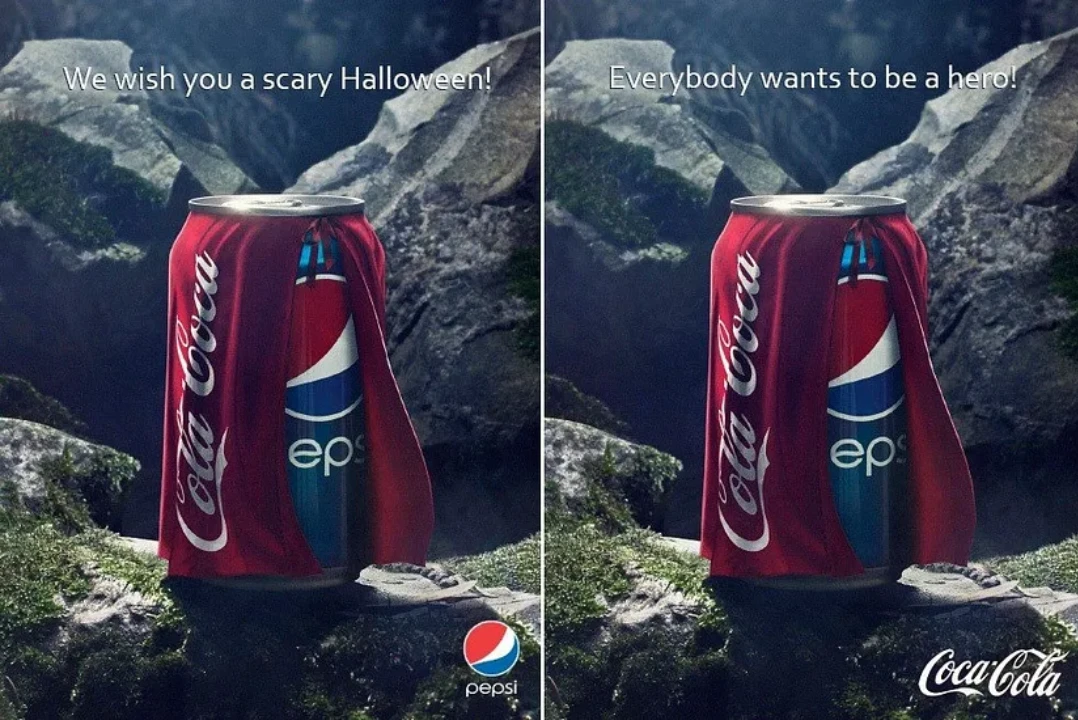
Consumer preferences are changing, with a rising demand for healthier beverage options. In response, PepsiCo is expanding its lineup of healthier alternatives, PepsiCo is innovating in sparkling water, organic drinks and other healthier alternatives rising in demand – an area Coke still struggles with. Though mainstay brands like Pepsi, Mountain Dew and Gatorade see continued success, PepsiCo’s Aquafina, Propel and beyond-cola options make strides towards becoming household names too.
And on plastic sustainability, PepsiCo moves to differentiate itself from Coke by replacing plastic multipack rings with paper alternatives, working towards “pep+” goals targeting 50% virgin plastic reduction per serving by 2030. Between consumer-aligned portfolio adaptation, enterprising innovation and demonstration of environmental commitments, PepsiCo leverages its food and diversified beverage.
Red Bull GmbH
Red Bull faces competition from Coca-Cola’s own energy drinks, including brands like Monster and Nos. However, Red Bull still dominates the energy drink market with a 40% market share. Red Bull’s competitive advantage comes from its strong brand image built around extreme sports, daring marketing, and sponsorship of events like Formula 1. In terms of numbers, Red Bull is a powerhouse. In 2022, they sold over 11 billion cans and grew their sales by 23.9% to 9.684 billion euros.
In contrast, Coca-Cola’s energy drinks take a different branding approach, with a wider range of flavors and options like sugar-free versions to appeal to mass market tastes. While this may give Coca-Cola’s brands a broader consumer base, Red Bull’s clear and focused brand identity centered on adventure allows it to charge premium prices and retain a fiercely loyal customer base.
For the future, Red Bull is focusing on Western Europe and the USA, along with developing countries. They’re also focusing on making their 250ml cans even more popular and expanding the ORGANICS by Red Bull range. This is their answer to the demand for healthier drinks, made with 100% natural ingredients, no caffeine, and five different flavors to please all tastes.
Nestle
Nestlé faces competition from Coca-Cola in categories like bottled water, coffee, tea and dairy beverages. Nestlé’s powdered and liquid beverages category has seen strong growth in recent years, with organic growth of 7.2% in the first half of 2023. Key brands driving this growth include Nescafé, Nesquik, Milo, and Nestea. Nestlé is innovating in this category by launching new products like plant-based Milo in Thailand and partnering with Kellogg on new breakfast-inspired beverages.
The company’s bottled water business also continues to perform well, with organic growth of 4.2% for the Waters segment in the first half of 2023. Nestlé is a leader in the global bottled water market with brands like Nestlé Pure Life, Perrier and S.Pellegrino. It takes over on Coca-Cola’s Dasani and Smartwater.
Both companies are investing in innovation and leveraging their strong brand portfolios. Nestlé outpaces Coca-Cola in coffee thanks to Nescafé, Nespresso and Starbucks at Home.
Both giants also battle for ready-to-drink tea and dairy drinks. Nestlé’s Nestea fights Coca-Cola’s Gold Peak Tea for market share. And Nestlé milk drink labels such as Milo and Nesquik take on Coca-Cola’s Fairlife in the dairy aisle. Though their portfolios overlap, each leverages unique advantages – Nestlé in coffee and dairy depth, Coca-Cola in carbonated beverages. Yet they increasingly target similar consumer needs in emerging segments like plant-based and functional drinks.
Nestlé has launched a new plant-based version of its popular Milo beverage in Thailand. The new Milo Plant-Based is made with oats, soy, and cocoa, and it is fortified with vitamins and minerals.
Keurig Dr. Pepper
Keurig Dr Pepper was formed in 2018 through the merger of Keurig Green Mountain and Dr Pepper Snapple Group. It is the third largest beverage company in North America, behind Coca-Cola and PepsiCo. Keurig Dr Pepper leverages its strong portfolio of over 120 beverage brands and leading market positions in categories like carbonated soft drinks, juice, water, coffee and tea to compete effectively against beverage titans like Coca-Cola.
Unlike Coke’s primarily sparkling soft drink focus, Keurig Dr Pepper has a diversified set of products spanning many key beverage segments. This provides resilience and opportunities for growth that Coke lacks. Specifically, Keurig Dr Pepper’s coffee segment, led by Green Mountain and Keurig brewers and K-cups, is posting double-digit growth as at-home coffee demand expands. These higher growth areas cushion KDP from declines in legacy carbonated soft drinks.
The Keurig Dr. Pepper beverage segment is the company’s largest business unit, accounting for approximately 70% of total revenue. The segment includes a portfolio of over 120 brands, including Dr. Pepper, Snapple, 7UP, A&W Root Beer, Sunkist, Mott’s, and Schweppes. Keurig Dr. Pepper also produces and distributes Keurig coffee makers and K-Cups.
Additionally, KDP competes by continuing to innovate, such as its recent Rolling Stones branded “Start Me Up” iced coffee line. While smaller than Coca-Cola, Keurig Dr Pepper uses its brand diversity, innovation and focus on growth segments like coffee to carve out leading market positions across numerous beverage categories.
You Might Also Like: Wayfair Competitors and Alternatives
Unilever
Unlike Coca-Cola which is heavily focused on carbonated soft drinks, Unilever’s beverage segment has a highly diversified portfolio with over 30 brands spanning tea, functional drinks, powdered beverages and more. This provides resilience against shifting consumer preferences.
For example, while soda consumption is stagnating in many markets, demand for tea and health-oriented offerings is rapidly growing. Unilever is well-positioned to capture this growth through beloved tea brands like Lipton and recent acquisitions like the fast-expanding hydration brand Liquid I.V., which Unilever plans to build into a $1 billion business.
The beverage or drinks segment is part of Unilever’s Nutrition business group. In 2022, this segment generated €13.9 billion in turnover, making it the largest segment in terms of sales. Some of Unilever’s most popular beverage brands include Lipton (formerly), Hellmann’s, Horlicks and Knorr. The segment generates approximately 10% of Unilever’s total revenue.
Unilever also innovates to create differentiated health products like its new Red Label pregnancy tea targeting an underserved consumer need. With its diversified beverage portfolio and focus on health and wellness, Unilever can better adapt to changing consumer tastes versus a company like Coke with heavy soda dependence. This provides Unilever with more balanced growth and insulation from declines in legacy carbonated soft drinks over the long term.
Monster Beverage Corporation
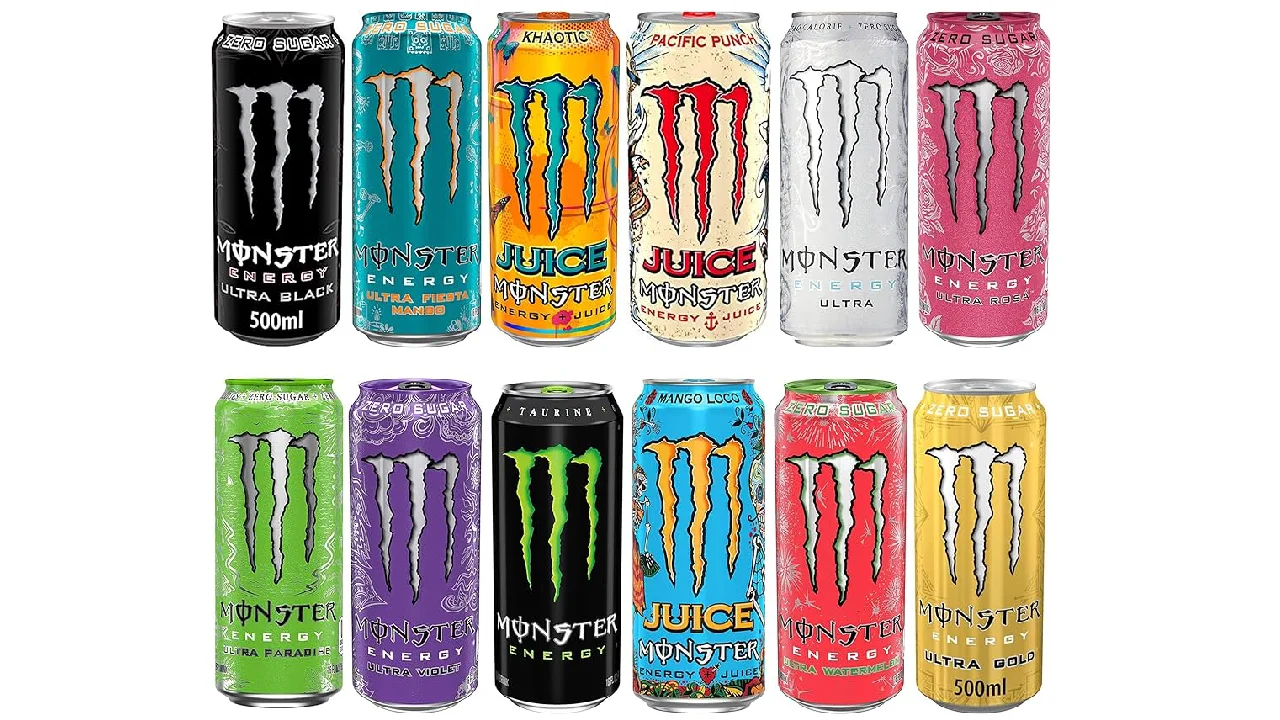
As the second largest energy drink company behind Red Bull, Monster Beverage leverages its pure play focus and expertise in the fast-growing energy drink category to effectively compete with more diversified beverage giants like Coca-Cola. It produces and distributes a variety of energy drinks, including Monster Energy, Monster Energy Extra Strength, NOS, Full Throttle, and Burn.
Monster Beverage’s net sales increased 11.9% in Q1 2023 to $1.70 billion, a record for the company. International sales are growing faster than domestic sales, and now account for 37% of total sales. The company’s alcoholic beverage segment increased 204.4% to $46.3 million in Q1 2023.
Monster continues to expand through innovation in energy drinks via additions like Monster Energy Zero Sugar as well as venturing into new products like Reign Storm performance energy drinks. It is planning to launch its Predator energy drink line in China as part of a greater emphasis on the ‘affordable’ segment of the energy drink category in Asia.
Additionally, Monster Beverage is expanding beyond traditional energy drinks and into alcoholic beverages including malt beverages and craft beer. This positions Monster to capture cross-category growth opportunities that Coca-Cola lacks. The recent Bang Energy acquisition also instantly gives Monster better distribution scale and manufacturing capabilities versus Coke’s smaller energy drink operations. Though still smaller in size, Monster Beverage’s nimble focus as a pure play energy drink provider allows it to better react to consumer preferences and health trends in one of the beverage industry’s hottest growth segments.
Danone
Unlike Coke’s carbonated soft drink dominance, Danone maintains a diversified beverage portfolio better positioned to react to shifting consumer preferences. Danone builds leading brands across water, dairy drinks, electrolyte beverages, coffee and plant-based offerings.
Danone delivered a solid first half of 2023, with like-for-like sales growth of 8.4%. This was underpinned by broad-based growth across all geographies and categories. Danone’s half year sales stood at €14.2 billion, up 8.4% on a like-for-like basis. The company has a strong brand portfolio, including Evian, Volvic, Activia, and Actimel.
While still smaller in total beverage sales than Coca-Cola, this focus on health and sustainability allows Danone to outperform in faster growing segments. For example, Danone grows electroyte offerings like Mizone in China amid strong consumer demand. Danone also innovates with unique offerings like Nuturis infant formula containing milk fat globule structures similar to breast milk.
Additionally, Danone is doubling down on cold brew coffee with its STōK brand, tapping into at-home barista trends and leveraging a new $65 million production facility. With strong sales growth across geographies and categories in 2022, Danone’s beverage diversity provides resilience while allowing targeted bets in hot segments like plant-based, coffee and premium pediatric nutrition. This focus beyond traditional soft drinks gives Danone an advantage as consumer preferences shift.
Starbucks Corporation
While not direct competitors, they compete in the beverage segment. Unlike Coca-Cola’s primarily beverage focus, Starbucks leverages its position as the world’s largest coffeehouse chain to offer a differentiated in-store experience centered around premium, ethically-sourced coffee. This allows Starbucks to command premium pricing and drive rapid growth, with sales up 12% in 2023 on 10% higher global same-store sales.
Starbucks also adapts faster to shifting consumer preferences thanks to its retail presence, moving towards more convenience-focused options like drive-thrus and pickup while accelerating sustainability efforts like $50M+ investments in renewable water and waste projects.
At the same time, Starbucks competes by innovating in emerging spaces like plant-based dairy and ice cream through partnerships with brands like Silk. With its retail experience generating unmatched consumer loyalty and data, Starbucks can continue leading coffee culture while pushing into new growth categories. This focus beyond traditional beverage manufacturing gives Starbucks unique advantages that bottlers like Coke lack.
Nongfu Spring
As the largest bottled water company in China, Nongfu Spring has developed an extensive distribution network that reaches retailers across the country, giving it a strong competitive advantage over rivals like Coca-Cola that are still gaining traction in the Chinese market.
By pricing its products lower than brands such as Coke’s Dasani, Nongfu Spring makes its packaged drinking water affordable for most Chinese consumers. This pricing strategy and supply chain efficiency have allowed Nongfu Spring to capture over 50% of China’s nearly $30 billion bottled water industry.
Nongfu Spring recorded a revenue of RMB 20,462 million in the first half of 2023, representing an increase of 23.3% as compared with the corresponding period of last year.
Revenue from packaged drinking water products increased by 11.7% as compared with that in the first half of last year, accounting for 51.0% of the total revenue. Whereas revenue from beverage products increased by 38.9% as compared with the same period of last year, accounting for 48.4% of the total revenue.
Beyond bottled water, Nongfu Spring leverages its brand reputation and lower prices to compete effectively with Coke’s portfolio of carbonated soft drinks. Popular Nongfu brands like Teana tea drinks, Beibei fruit juices and Cha Cha sport drinks each hold commanding category market shares in China, although Coca-Cola retains its overall leadership in total beverage sales through the strength of globally recognized products such as Sprite, Fanta and Minute Maid.
Britvic
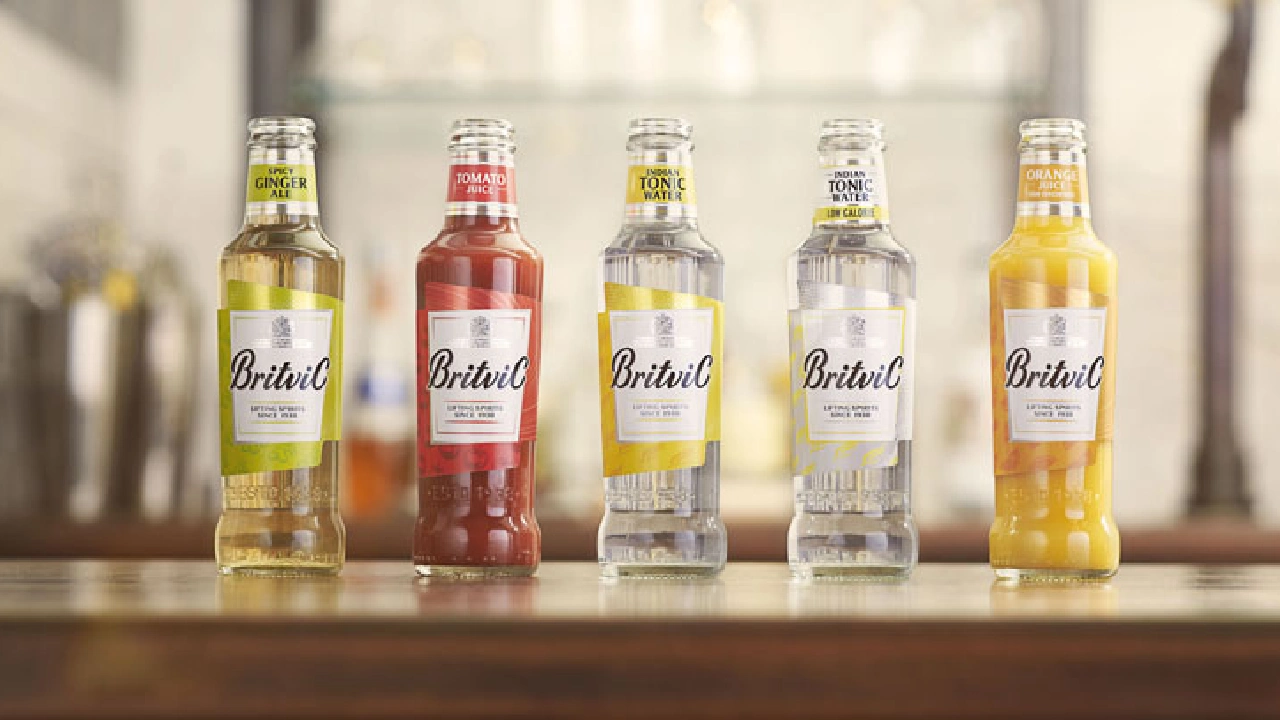
Britvic plc, the leading UK soft drink producer, competes fiercely with global giant Coca-Cola. While Coke dominates the traditional carbonated drink market, Britvic has focused on innovation in flavored, fruit-based, and functional soft drinks. Brands like J2O, Robinsons, and Tango hold over 50% of the UK juice and juice drinks market verses Coke’s Innocent brand. Britvic’s recent launch of premium, ready-to-drink J2O mocktails taps into growing demand for sophisticated non-alcoholic alternatives.
Britvic’s revenue grew by 7.9% to £794.0m as stated in its Q2 interim results 2023, driven by volume growth and a positive price/mix. Standout performance from Tango and Pepsi MAX. It is the largest producer of soft drinks in the United Kingdom, and has a significant presence in other international markets, including Brazil, France, and the United States.
Additionally, Britvic partners with firms like Xampla to pioneer clear bottle technology, now used across its brand portfolio, which research shows increases recycling. These innovative products and sustainability efforts combined with strong Brazilian growth through brands like Maguary and Dafruta put Britvic in good stead to compete with giants like Coca-Cola by leveraging UK strengths and expanding internationally.
Carlsberg
While not direct competitors, Carlsberg and Coca-Cola indirectly compete as major global beverage companies. Carlsberg, the Danish brewer known for brands like its flagship Carlsberg beer, Somersby cider, and Baltika, has over 140 beer varieties sold in 150 countries. Though beer and soft drinks have distinct consumer bases, both are widely consumed socially.
The company has also innovated and grown the alcohol-free category significantly, with 32 new product launches and an increase in sales volumes of 7% in Western Europe for 2022 alone. Carlsberg is expanding its alcohol-free offerings and partnering with organizations to reduce irresponsible drinking.
Carlsberg has been driving up its alcohol-free volumes over the last few years, with volume growth of 11% in 2020 and 17% in 2021.
Carlsberg competes by leading European alcohol-free innovation with 32 new product launches this year amidst growing demand for low and non-alcoholic drinks. Sustainability also drives competition—Carlsberg aims to cut CO2 emissions 40% by 2030, like Coca-Cola targets net zero emissions by 2040. Saving water is another focus seen in Carlsberg’s pioneering Fredericia brewery recycling system.
As health consciousness and corporate responsibility shape consumer preferences, Carlsberg and Coca-Cola make strategic decisions to satisfy customers and run environmentally sound businesses. Carlsberg’s advantages in the alcohol-free space and European stronghold put pressure on Coca-Cola in shared markets.
Anheuser-Busch InBev
As the world’s largest brewer by volume and a leading global beverage company, Anheuser-Busch InBev (AB InBev) indirectly competes with Coca-Cola across the broader drinking space. Though not direct product rivals, both wield massive distribution power and consumer marketing to dominate market share.
AB InBev leans on its portfolio of over 500 beers, including iconic brands like Budweiser and Corona, to drive 7.2% revenue growth this quarter through pricing and premiumization strategies. 64% of AB InBev’s revenue was generated through B2B digital platforms in 2Q23. The company’s digital direct-to-consumer (DTC) ecosystem generated revenue of more than 385 million USD in 2Q23.
Expanding into “beyond beer” categories, AB InBev builds seltzers, spirits, non-alcoholics and more to court contemporary drinking trends towards wellness and moderation.
AB InBev is investing €31 million to expand its no- and low-alcohol brewing capabilities in Belgium. No-alcohol beer is one of the industry’s fastest-growing categories, and AB InBev is meeting consumer demand with a portfolio of 30 brands available in 42 countries.
Here too Coca-Cola moves, rapidly growing its water, juice and tea portfolio amidst declining soda consumption. With Coca-Cola boasting intergenerational brand equity, AB InBev focuses loyalty marketing towards legal-age drinkers specifically. The two juggernauts foster constant innovation to capture evolving consumer thirsts.
Kraft Heinz Company
You might wonder, how can a company renowned for its ketchup and macaroni and cheese compete with the iconic Coca-Cola?
As one of the world’s largest food and beverage companies, Kraft Heinz competes indirectly with beverage titan Coca-Cola through innovation, sustainability, and global growth. Once known only for condiments and packaged foods, Kraft Heinz moves into ready-to-drink categories through launches like LEA & PERRINS zesty Bloody Mary mix.
Additionally, Kraft Heinz sets ambitious plastic reduction targets, pledging to cut virgin plastic use 20% by 2030. Other efforts include increasing recycled content in packaging and exploring alternative materials like fiber. These sustainability commitments parallel Coca-Cola’s zero plastic and net zero emissions goals. Expansion into growing markets like China and India also parallels Coca-Cola’s emerging market growth strategy.
Though their portfolios differ, Kraft Heinz competes by leveraging R&D investments in new beverage products, greener packaging, and tapping developing consumer bases abroad to drive sales, following Coca-Cola’s tried and true global playbook. In 2022, Kraft Heinz matched Coca-Cola with 9.8% organic net sales growth.
Kraft Heinz reported strong financial results for the fourth quarter and full year 2022. Organic Net Sales increased 10.4% in the fourth quarter and 9.8% for the full year, driven by price increases to mitigate rising input costs. The Company expects 2023 Organic Net Sales growth of 4 to 6% versus 2022.
Suntory Beverage and Food Limited
As Japan’s second largest domestic soft drink producer, Suntory Beverage & Food Limited leverages its 2,000+ brand beverage portfolio and global operating footprint across 30+ countries to compete with beverage juggernaut Coca-Cola.
Revenue increased by 10.3% year-on-year to 749,135 million yen in the six months ended June 30, 2023.
While Coke dominates the traditional carbonated arena, Suntory focuses investment on leadership in tea, coffee, water and emerging spaces like ready-to-drink cocktails. For example, Suntory unveils Minel, a proprietary mineral water system using reusable bottles and Vessl’s innovative closure technology for sustainable on-demand flavoring. Such eco-friendly innovation aligns with Coca-Cola’s plastic reduction and carbon neutrality goals.
Additionally, Suntory Beverage & Food constructs a new Australian production facility to expand its -196 Double Lemon RTD cocktail reaching over $1.9 billion revenue through the new Suntory Oceania partnership. As consumer preferences drift towards wellness and convenience, Suntory’s portfolio strategy and global supply chain developments pressure Coca-Cola’s dominance.
To Wrap it Up
The Coca-Cola Company has many major competitors in the beverage industry, though it remains a dominant market leader globally. Its main competitors include PepsiCo, Nestlé, Dr Pepper Snapple Group, and Red Bull GmbH in categories like soft drinks, juices, energy drinks and more. Though some of these brands may outsell Coca-Cola in certain countries or segments, Coke maintains the highest global brand value.
Consumers have many alternatives to Coca-Cola products across non-alcoholic beverage types. Still, the iconic Coke brands are unmatched in their worldwide recognition and distribution. While the future of consumer preferences and the beverage market remains dynamic, The Coca-Cola Company strives to adapt its diverse product portfolio to new trends and adjust its strategy to stay competitive with both direct rivals and substitute offerings.
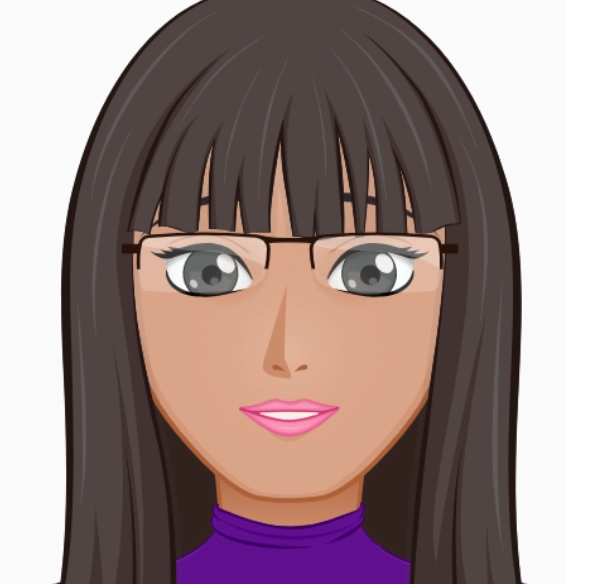
I have always been fascinated by the inner workings of companies and industries. So I decided to study business to explore it more. My goal is to take all my research and turn it into cool stories that give people a better understanding of the business world.

